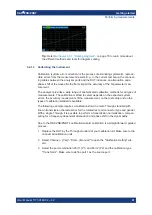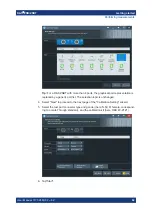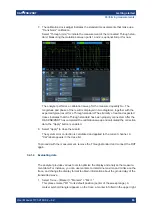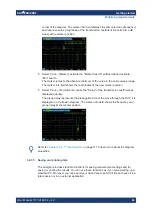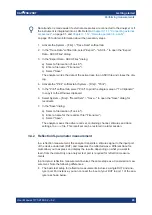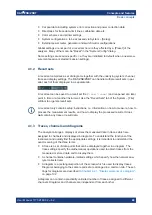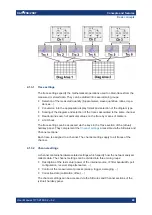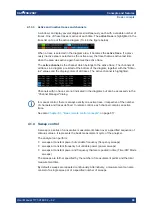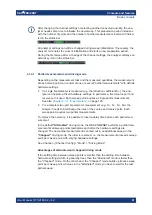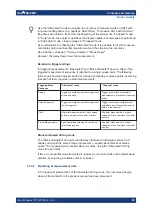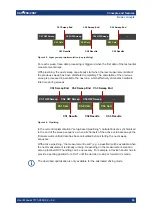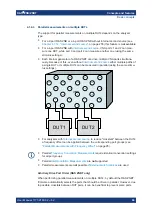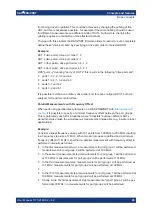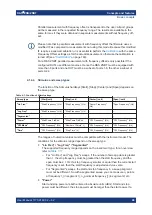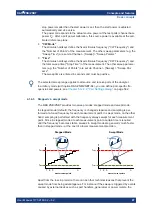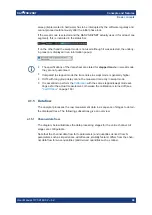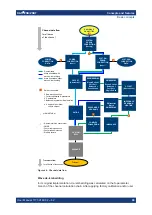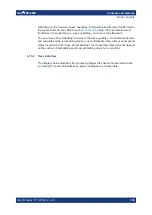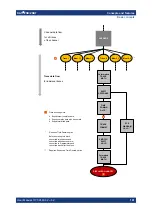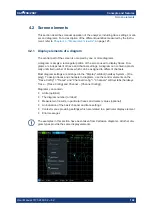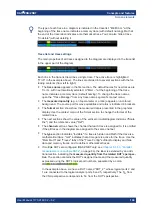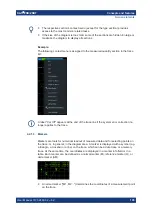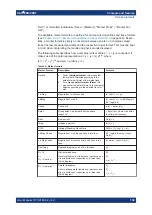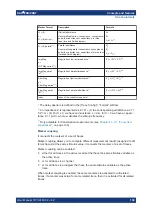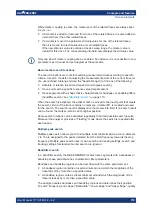
Concepts and features
R&S
®
ZNB/ZNBT
95
User Manual 1173.9163.02 ─ 62
from being driven in parallel. This could be achieved by changing the cabling of the
DUT, but this is not always possible - for example if the same cabling should be used
for different measurements and different kinds of DUTs. Furthermore changing the
cabling requires a recalibration of the affected channels.
To cope with this problem the R&S
ZNBT firmware allows to restrict or even completely
define these "drive port sets" by specifying a drive port order for selected DUTs.
Example:
DUT 1 (two ports): drive port order 1, 2
DUT 2 (two ports): drive port order 2, 1
DUT 3 (four ports): drive port order 3, 4, 1, 2
DUT 4 (four ports): drive port order 4, 3, 2, 1
With "port x-y" denoting "port y of DUT x" this results in the following "drive port sets":
●
ports 1-1, 2-2, 3-3 and 4-4
●
ports 1-2, 2-1, 3-4 and 4-3
●
ports 3-1 and 4-2
●
ports 3-2 and 4-1
It is possible to define an arbitrary drive order port for each configured DUT, both via
analyzer GUI and remote interface.
Parallel Measurements with Frequency Offset
When performing parallel measurements on a R&S
ZNB/ZNBT with
, it is possible to specify a minimum frequency offset between the port groups.
This is particularly useful for situations where "Crosstalk" between different DUTs
would otherwise make the simultaneous measurement impossible (e.g. in wafer prober
applications).
Example:
Consider a linear frequency sweep with 101 points from 100 MHz to 200 MHz resulting
in a frequency step size of 1 MHz. When two port groups are defined and a minimum
frequency offset of 1 MHz is specified, a parallel measurement with frequency offset is
performed internally as follows:
●
In the first measurement step, no measurements for port group 1 will be performed;
measurements for port group 2 will be performed at 100 MHz.
●
In the second measurement step measurements for port group 1 will be performed
at 100 MHz; measurements for port group 2 will be performed at 101 MHz.
●
In the third measurement step measurements for port group 1 will be performed at
101 MHz; measurements for port group 2 will be performed at 102 MHz.
●
…
●
In the 101st measurement step measurements for port group 1 will be performed at
199 MHz; measurements for port group 2 will be performed at 200 MHz.
●
Finally, in the 102nd measurement step measurements for port group 1 will be per-
formed at 200 MHz; no measurements for port group 2 will be performed.
Basic concepts

